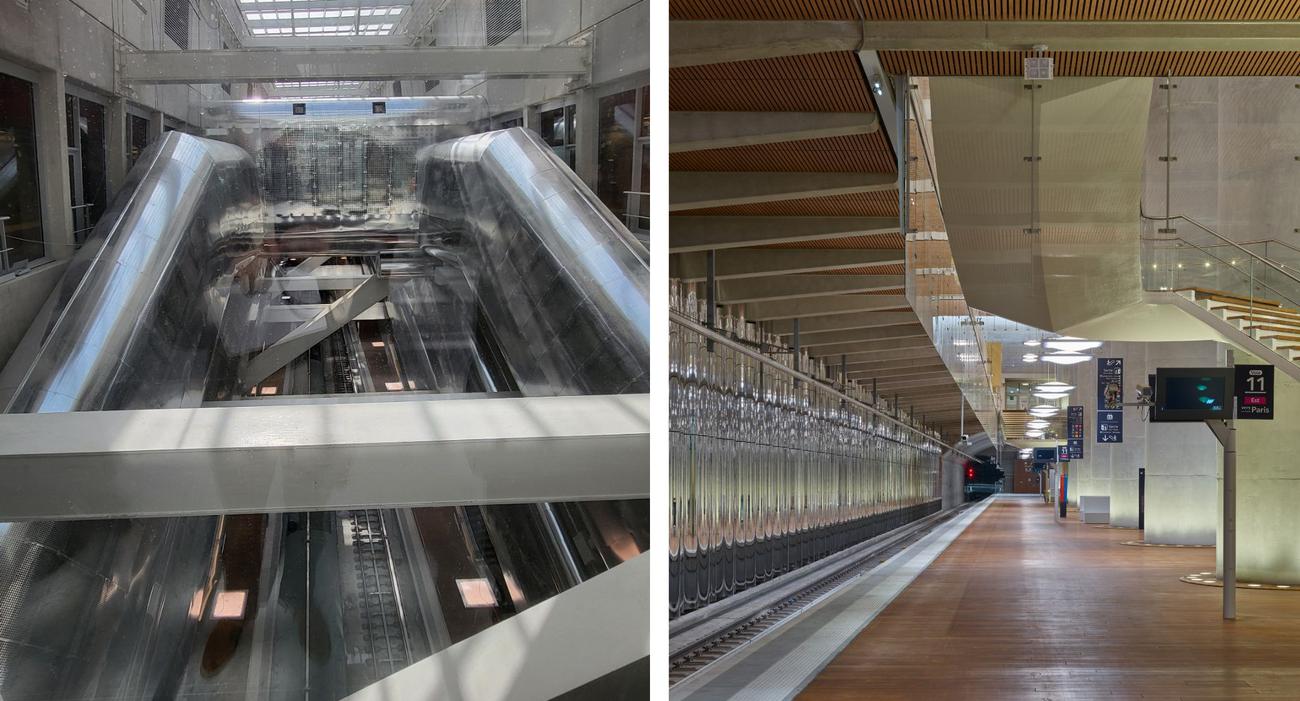We had to wait longer than expected, Covid being there… The three new RER E stations have just opened to the public to extend the line west of the Haussman-Saint Lazare station with Neuilly-Porte Maillot, La Fermate Défense and Nanterre -La Folie. And it will still be only from 10am to 4pm on weekdays and until 8pm on weekends until the end of November, waiting for all the new trains to come into operation. As for the rest of the line that should allow the connection Mantes la Jolie (Yvelines), will only be operational in 2026 (compared to 2024 originally planned).
Despite these disappointments, it must be recognized that these monumental achievements and in particular the two subway stations of Bring your swimsuit and La Défense are worth a visit. A sign that does not deceive, we could also see the Parisian travelers with smiles on their faces and the SNCF staff who did not hesitate to thank the architect Jean-Marie Duthilleul who designed the place for his work with the agency he. It must be said that he knows this RER line well, given that it was he who also designed the two new stations on this same route in 1999: Haussmann-Saint Lazare and Magenta.
Bring the light
If in these two new stations we find chandeliers quite similar to those used in 1999 as well as white marble and wood on the floor, the specificity of these two stations is that they are not placed in a tunnel but were dug from above: directly from the ground to Porte Maillot and from the CNIT car park to La Défense. Result: much slimmer volumes for these two monumental creations. “Since installing the line required digging down to 30 meters underground, I wanted to bring daylight up to that point, explains Jean-Marie Duthilleul. The principle is very simple but has generated some constraints.”
Saying it is an understatement… An element directly visible from the outside, the Neuilly-Porte Maillot station is characterized by this glass strip 120 meters long and 10 meters wide located exactly above the tracks. “It is the largest glass sidewalk in the capital”, laughs Jean-Marie Duthilleul. Because anyone who doesn’t suffer from vertigo can jump on these 5 centimeter thick silk-screened slabs that let daylight pass, as promised, right into the bowels of the station. But safety demands, given that the work began shortly after the attack in Nice, studs were installed around this strip of glass to prevent a crazed vehicle from launching itself through the glass roof of the station. It was also necessary to integrate fire safety issues in the absence of a fire-resistant concrete slab above the railway tracks. This explains why the large escalators were “covered”, installed in aluminum cylinders ensuring safety and light reflection.
Temporary that lasts
And how to explain these two very different entrances: a glass prism on the Neuilly-sur-Seine side and a stretched canvas on the Paris side? “For the canvas, it is a project that was done while I was walking, specifies Jean-Marie Duthilleul. It was basically a temporary structure that was installed at some point during construction. Ultimately, we realized that the installation had real benefits in terms of signage, was very easy to spot and could very well be permanent.” And after leaving this very bright station, all uncertain and oblique, head towards its “little” sister of La Défense-Grande Arche.
This time the rounded and curved lines take center stage. A connection between the two stations: the same chandeliers (only the setting is different) but also the white Carrara marble on the floor, whose virtues were validated by the architect after 25 years of use at Haussmann6Saint-Lazare as well as the use of wood on the docks. “I wanted this very domestic and warm material that contrasts with the concrete and metal,” emphasizes Jean-Marie Duthilleul. Again we had to contend with fire safety constraints to impose these bamboo slats. Furthermore, a short fire on the construction site on the La Défense side had shown that the parquet floor was particularly resistant.
In this second station, in the absence of natural light, we benefit from even more generous volumes. What stands out are these 20 2.44 meter diameter raw concrete columns that support the CNIT which sits just above. The rounded shapes are also found in the white shapes that adorn the walls of the Corian technical rooms. Finally, a friendly and playful touch in a station where the platform is central, the architect wanted to avoid travelers finding themselves faced with a dark and sinister wall. For this reason, in front of the platforms we find a metal strip that forms waves like deforming mirrors, constantly creating movement and animation.
